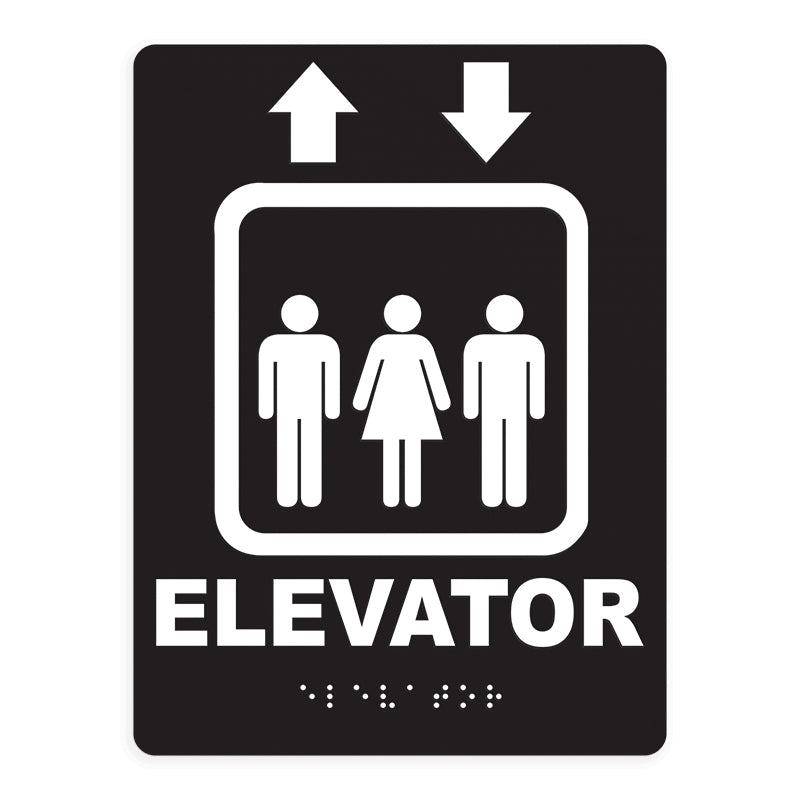Customizing ADA Signs to Satisfy Your Details Needs
Customizing ADA Signs to Satisfy Your Details Needs
Blog Article
Checking Out the Trick Functions of ADA Indications for Improved Availability
In the world of access, ADA indications serve as quiet yet powerful allies, ensuring that rooms are accessible and inclusive for individuals with disabilities. By integrating Braille and tactile elements, these indicators break obstacles for the visually damaged, while high-contrast shade schemes and legible fonts cater to varied aesthetic demands.
Significance of ADA Compliance
Making certain conformity with the Americans with Disabilities Act (ADA) is crucial for fostering inclusivity and equal access in public rooms and work environments. The ADA, established in 1990, mandates that all public facilities, employers, and transport services fit individuals with impairments, guaranteeing they take pleasure in the same legal rights and chances as others. Conformity with ADA standards not only fulfills legal responsibilities however additionally enhances an organization's reputation by demonstrating its dedication to variety and inclusivity.
One of the crucial elements of ADA compliance is the execution of available signage. ADA indicators are designed to make certain that people with handicaps can easily browse through structures and rooms. These indicators should comply with details guidelines regarding dimension, font style, shade comparison, and placement to ensure presence and readability for all. Properly carried out ADA signs helps get rid of obstacles that individuals with specials needs usually encounter, therefore promoting their self-reliance and confidence (ADA Signs).
Moreover, sticking to ADA guidelines can minimize the risk of legal effects and potential penalties. Organizations that stop working to follow ADA standards might face penalties or lawsuits, which can be both destructive and financially troublesome to their public photo. Thus, ADA compliance is important to cultivating a fair atmosphere for every person.
Braille and Tactile Elements
The consolidation of Braille and responsive aspects right into ADA signage symbolizes the concepts of availability and inclusivity. These features are essential for people who are blind or aesthetically damaged, enabling them to navigate public areas with better independence and self-confidence. Braille, a tactile writing system, is important in supplying composed info in a style that can be conveniently perceived via touch. It is typically put under the equivalent text on signage to make sure that individuals can access the info without aesthetic help.
Responsive aspects prolong beyond Braille and include elevated characters and signs. These parts are designed to be discernible by touch, allowing individuals to identify space numbers, washrooms, exits, and various other important areas. The ADA sets certain standards regarding the dimension, spacing, and placement of these responsive components to optimize readability and make sure consistency throughout different atmospheres.

High-Contrast Color Pattern
High-contrast color pattern play a critical role in enhancing the presence and readability of ADA signs for individuals with aesthetic impairments. These systems are crucial as they optimize the difference in light reflectance between text and background, guaranteeing that indications are easily discernible, also from a distance. The Americans with Disabilities Act (ADA) mandates the usage of particular shade contrasts to accommodate those with limited vision, making it a vital aspect of compliance.
The efficacy of high-contrast colors lies in their capability to attract attention in numerous illumination problems, consisting of poorly lit settings and areas with glare. Generally, dark text on a light background or Visit This Link light message on a dark background is utilized to achieve optimum contrast. For example, black message on a white or yellow history provides a stark visual distinction that aids in quick recognition and comprehension.

Legible Fonts and Text Size
When taking into consideration the style of ADA signage, the selection of understandable font styles and ideal message dimension can not be overstated. The Americans with Disabilities Act (ADA) mandates that typefaces have to be sans-serif and not italic, oblique, script, very decorative, or of uncommon form.
According to ADA guidelines, the minimal message elevation should be 5/8 inch, and it must enhance proportionally with watching range. Consistency in text dimension adds to a natural visual experience, assisting people in navigating settings effectively.
Moreover, spacing between letters and lines is integral to legibility. Appropriate spacing prevents characters from appearing crowded, enhancing readability. By adhering to these criteria, designers can dramatically improve accessibility, guaranteeing that signs serves see this website its desired purpose for all individuals, despite their aesthetic capacities.
Efficient Positioning Approaches
Strategic positioning of ADA signs is important for taking full advantage of accessibility and making sure conformity with lawful requirements. Correctly located signs assist people with impairments properly, assisting in navigating in public spaces. Key considerations include closeness, presence, and height. ADA standards stipulate that indications must be mounted at a height between 48 to 60 inches from the ground to guarantee they are within the line of view for both standing and seated people. This typical height variety is vital for inclusivity, making it possible for wheelchair customers and individuals of varying elevations to gain access to details easily.
In addition, indicators must be placed nearby to the lock side of doors to permit very easy recognition prior to access. Consistency in sign placement throughout a center boosts predictability, minimizing confusion and enhancing total individual experience.

Verdict
ADA indicators play a vital role in advertising ease of access by incorporating functions that deal with the requirements of individuals with specials needs. Including Braille and tactile components ensures essential information is accessible to the visually damaged, while high-contrast color pattern and legible sans-serif font styles enhance our website exposure across various lights problems. Effective positioning methods, such as ideal mounting elevations and tactical locations, additionally assist in navigating. These aspects collectively promote an inclusive atmosphere, emphasizing the importance of ADA conformity in making sure equal gain access to for all.
In the realm of access, ADA signs offer as silent yet effective allies, ensuring that spaces are navigable and inclusive for people with specials needs. The ADA, passed in 1990, mandates that all public centers, employers, and transportation solutions accommodate people with impairments, guaranteeing they appreciate the very same rights and possibilities as others. ADA Signs. ADA indications are developed to guarantee that people with disabilities can conveniently browse through spaces and buildings. ADA guidelines stipulate that signs need to be mounted at a height in between 48 to 60 inches from the ground to ensure they are within the line of sight for both standing and seated people.ADA indicators play a crucial duty in advertising ease of access by incorporating features that deal with the requirements of individuals with specials needs
Report this page